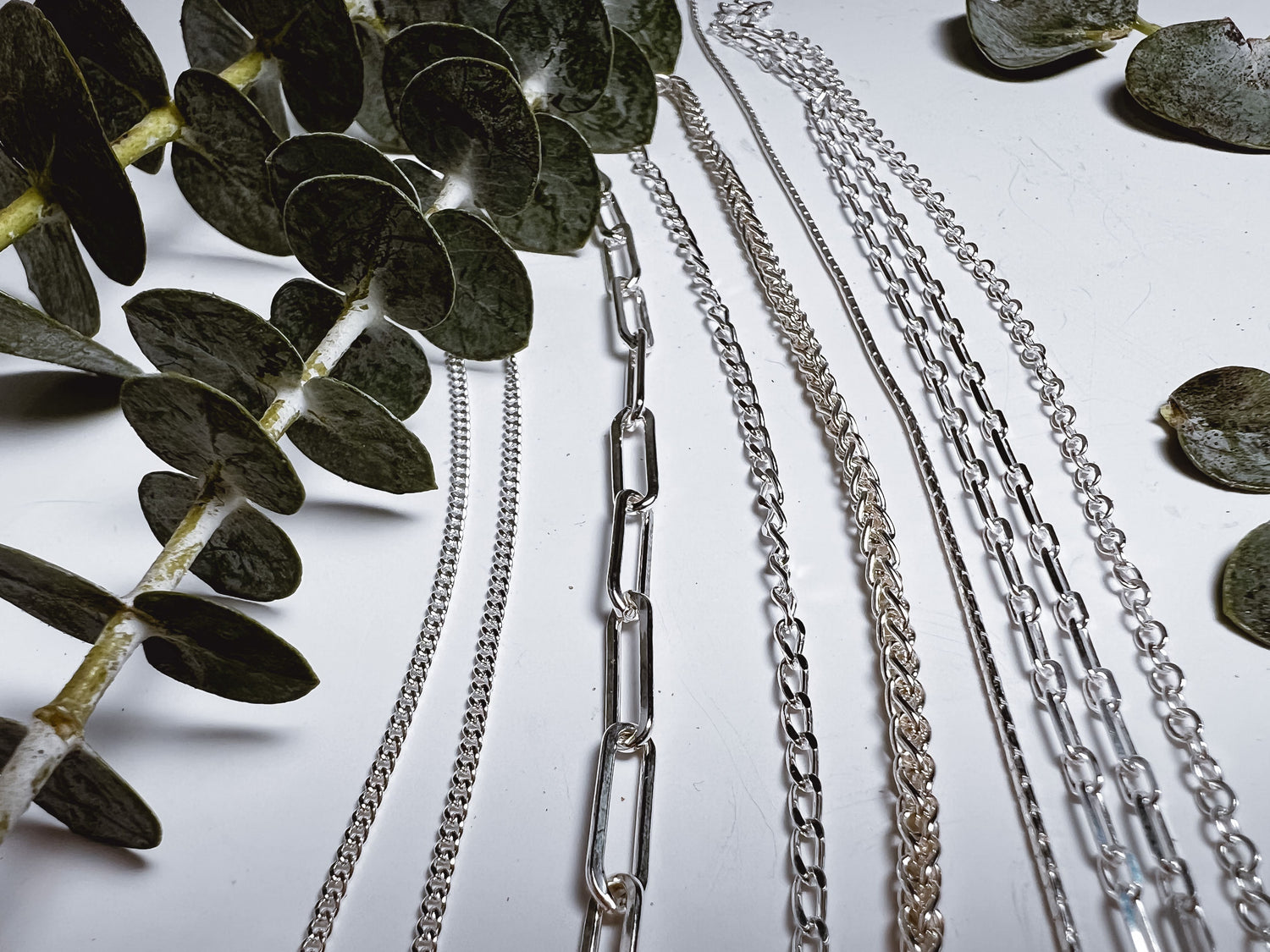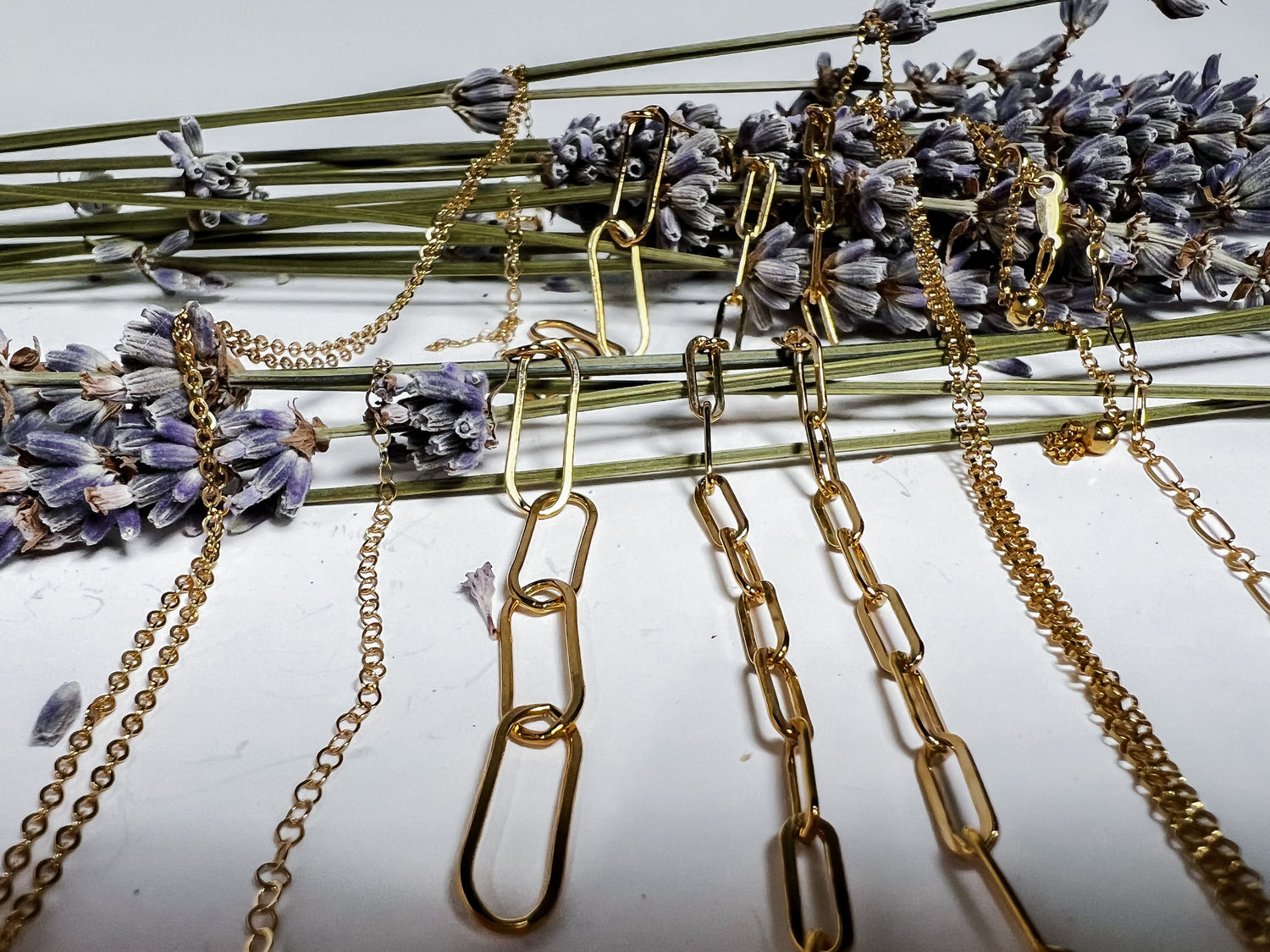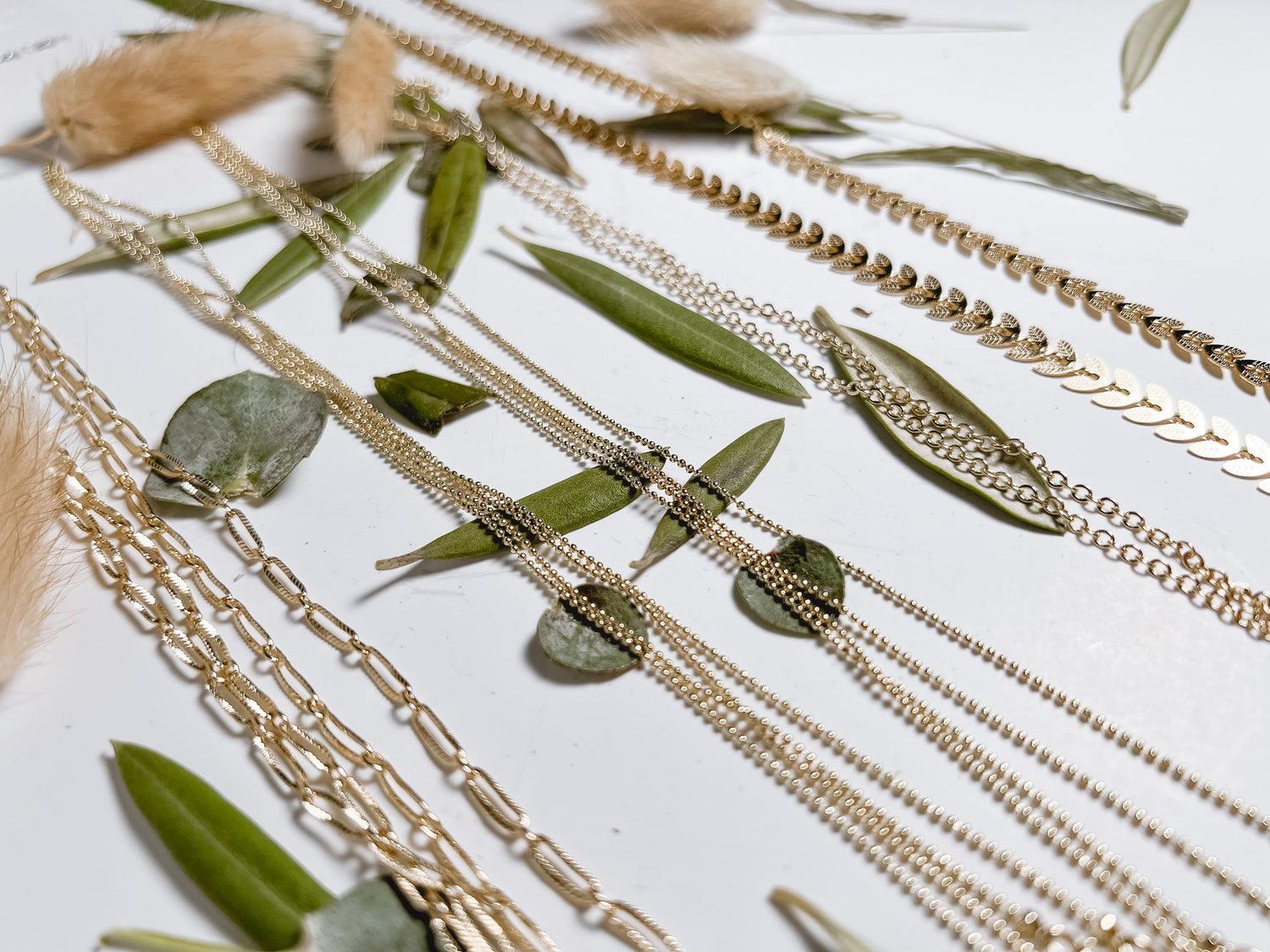Metals
Sterling Silver
Sterling silver is an alloy made up of 92.5% silver and 7.5% other metals, typically copper. The small amount of copper added to the silver helps to make the metal stronger and more durable, which is why it is often used for making jewelry and other decorative items. It is also known as 92 silver, because of the 92.5% pure silver content.
14K Gold-filled
What is it?
14K gold filled metal is a type of jewelry that is made by bonding a layer of 14K gold to a base metal. The gold layer on the surface is thick enough that it can be considered as 14K gold, but it's not as expensive as solid 14K gold. The gold layer on the surface is typically 5% or 1/20th of the total weight of the piece. It is a good alternative to solid gold for people who like the look of gold jewelry but can't afford the cost of solid gold.
Gold-filled vs Gold Plated?
Gold filled metal is different from gold plated metal in the way it is made and the thickness of the gold layer.
Gold plating is a process where a thin layer of gold is electroplated onto a base metal. The gold layer is very thin, typically less than 0.5 microns, and it's just a surface coating. It can wear off over time,
exposing the base metal underneath.
Gold-filled, on the other hand, is made by bonding a thick layer of 14K gold to a base metal using heat and pressure. The gold layer is much thicker than in gold plating, typically 1/20th of the total weight of the piece. As a result, gold-filled jewelry is more durable and less likely to wear off than gold plated jewelry.
So, In summary, gold filled is more durable, thicker and has a higher quality of gold than gold plated.
Jewelers Brass or Brass
Jewelers brass is a type of metal alloy that is commonly used in jewelry making. It is made by combining copper and zinc in a specific ratio. The exact composition of jewelers brass can vary depending on the manufacturer, but it typically contains around 70-80% copper and 20-30% zinc.
Jewelers brass is a cost-effective alternative to precious metals like gold and silver, and it is popular for making costume jewelry, crafts, and other decorative items. It is relatively easy to work with, and it can be shaped, soldered, and polished to a high shine.
Jewelers brass is also known as "red brass" because of its reddish color, it's a yellowish color can also be achieved by adding other metals. It is also corrosion-resistant, durable and
hypoallergenic.
It is important to note that some people may have an allergic reaction to copper and thus should avoid brass jewelry.
Gold
Gold is a soft, malleable metal that can be easily shaped into various designs. It is also a durable metal that does not tarnish or corrode easily, making it a suitable option for long-lasting jewelry. Gold is often mixed with other metals, such as silver, copper, or zinc, to create various shades of gold and to increase its durability. The most common shades of gold used in jewelry are yellow, white, and rose gold. The purity of gold used in jewelry is measured in karats (K or kt), with 24 karat gold being the purest form (100% gold) and 14 karat gold being the most common form used in jewelry (58.5% gold).
Precious Stones & Gemstones
Precious Stones
Precious stones, also known as gemstones, are rare and valuable minerals or rocks that are used in jewelry and other decorative items. They are characterized by their beauty, durability, and rarity. The most well-known precious stones include diamonds, rubies, sapphires, and emeralds.
- Diamonds are the hardest known natural substance and are prized for their brilliance, fire, and luster. They are also the most popular precious stone for engagement rings.
- Rubies are a type of corundum and are valued for their deep red color.
- Sapphires also a type of corundum, come in a variety of colors including blue, pink, yellow, and green.
- Emeralds are a type of beryl and are valued for their rich green color.
- Other precious stones include pearls, opals, and turquoise.
- Pearls are formed inside certain mollusks and are prized for their natural lustrous appearance.
- Opals are a type of mineraloid and are valued for their unique play of colors.
- Turquoise is a hydrated phosphate of copper and aluminum, and is known for its blue-green color.
Precious stones are often graded according to their quality, with the highest quality stones being considered "flawless" or "internally flawless" and having high clarity and color.
Semi-Precious Stones
Semi-precious stones are minerals or rocks that are used in jewelry and other decorative items, but are not as valuable or rare as precious stones. They are still considered valuable and are sought after for their beauty and unique characteristics.
Some examples of semi-precious stones include amethyst,
garnet, citrine, aquamarine, and peridot.
- Amethyst is a type of quartz and is known for its deep purple color.
- Garnet is a group of minerals with a variety of colors such as red, orange, and green.
- Citrine is a type of quartz and ranges in color from pale yellow to deep orange.
- Aquamarine is a type of beryl and is known for its blue-green color.
- Peridot is a type of olivine and is known for its olive-green color.
Semi-precious stones are often less expensive than precious stones, making them more accessible to a wider range of people. They are used
in a variety of jewelry styles, and are also popular for use in healing and
spiritual practices.
Cabochon Gemstone
A cabochon (or cabochon gemstone) is a type of gemstone that is cut and polished in a specific way that gives it a smooth, convex, rounded shape. The term "cabochon" comes from the French word "caboche" which means "knob" or "head" referring to the rounded shape of the stone. Unlike faceted gems, cabochons do not have a flat surface, and their polish is not as high, which makes them suitable for opaque or translucent stones like turquoise, opals, moonstones, and many others. As a result of the unique nature of cabochons, they often have a more natural and organic feel to them than faceted gems.


